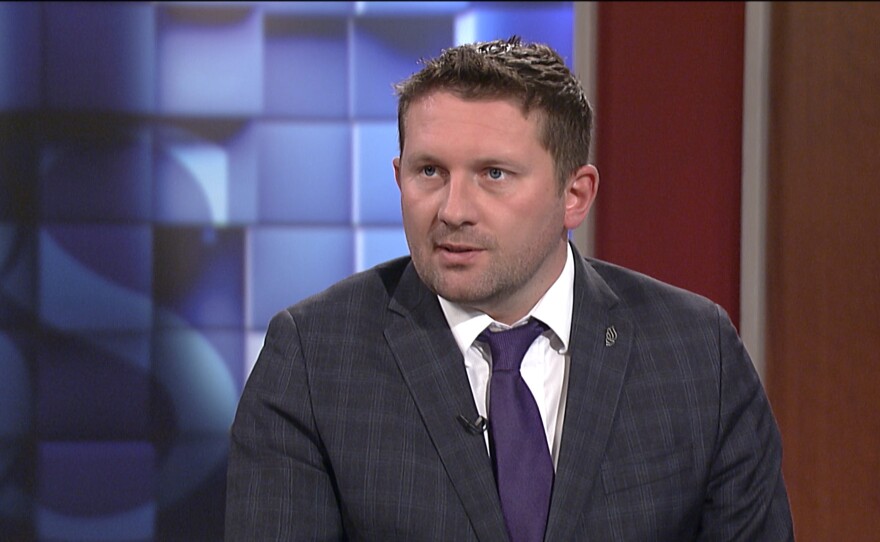The Navy is getting closer to releasing a review of two collisions that killed 17 sailors in the Pacific this summer. Human error has already been identified as part of the cause of the collisions. But even before the review is released, veterans who served in the Pacific say what happened on board the two destroyers is only a symptom of wider problems the Navy faces.
It is tough to imagine how a high-tech warship like the USS John McCain could collide with a slow-moving tanker off Singapore in August or how the USS Fitzgerald could collide with a container ship near Tokyo in June.
Yet the collisions were less surprising to veterans who have sailed in the Pacific. For decades they have watched the Navy grapple with issues at sea. Shawn VanDiver spent 12 years in the Navy. He was a fire controlman on two ships in the Pacific in the 2000s.
“At a minimum, there will be human error in here,” VanDiver said. “There was a series of human errors that had to happen for these sorts of collisions to happen.”
The Navy has already released preliminary findings that suggest both crashes were preventable. In relieving the Fitzgerald’s top officers, the Navy suggested the crew lost situational awareness, which sailors call “the bubble.”
RELATED: Navy Takes A Pause After USS McCain Collision
“Imagine holding in your hand a soap bubble and it symbolizes your complete understanding of what is going on around you,” said Kevin Eyer, a retired Navy captain. “To lose the bubble means it pops. You don’t really understand all the things transpiring around you.”
Eyer is a 27-year Navy veteran who commanded the cruisers USS Chancellorsville, USS Shiloh and USS Thomas S. Gates during his tenure.

The waters around Tokyo are as crowded as the skies over O’Hare Airport in Chicago, but the airplane analogy does not quite hold, he said.
RELATED: San Diego Sailors Killed In USS Fitzgerald Crash
“In the case of the skies over Chicago, there are external agents who are monitoring everything,” Eyer said. “And that is their primary purpose – to make sure those planes don’t run into each other.”
At sea, it is the crew that monitors the surroundings. And crews have shrunk over the years while duties have increased. Many of the sailors are handling weapons systems and listening to communications from around the globe rather than monitoring the area around the ship, Eyer said.
Technology also causes an information overload on the bridge, Eyer said.
“In a congested waterway, that thing (radar) is going to be pinging like this,” Eyer said. He snapped his fingers repeatedly. “You’re being overwhelmed. You’ve got too much information.”
The bridge may dial back the range of the radar to slow down the number of pings, or crew members may turn off the alarm, removing one more check and balance from the system, he said.
Any naval vessel would still have sailors standing watch around the clock. The Fitzgerald collision happened at night, and the McCain collision happened in the early morning.
“It is not a giant leap to think that someone could have fallen asleep,” VanDiver said. “This is something the Navy struggles with. I was at sea for seven years. I’ve seen it. I’ve seen lookouts fall asleep. It’s cold. You’re bundled in a jacket.”

RELATED: Bodies Of USS McCain Missing Sailors Found
Being on watch used to be the centerpiece of a sailor’s day. With smaller crews and a number of side duties, watch is now almost the downtime at the end of a day, VanDiver said.
“I know it’s the worst-kept secret that the Seventh Fleet is tired and undermanned,” VanDiver said. “I think that’s not an excuse for what happened, but it’s something we have to take into account.”
Eyer argues that chronic lack of sleep has always been a problem for crews on Navy ships.
“We’re paying attention to it now,” Eyer said. “There are a number of things people seem to have grasped now that are clearly contributing to this, whether it be maintenance, whether it be training or operational tempo, whether it be under-manning of ships.”
Some of these problems stem from a lack of basic seamanship. The Navy has been trying to beef up training after scaling back its surface warfare training school 15 years ago, Eyer said.
In August, the Navy set a 60-day deadline for issuing a comprehensive review of the crashes and recommending any changes to Navy operations. Multiple solutions are already being floated, from adding ships to the mission in the Pacific to getting rid of the some of the ancillary duties sailors perform at sea.
Ahead of the review, the top leadership of both the Fitzgerald and the McCain have already been relieved of command. The head of the Seventh Fleet, Vice Adm. Joseph Aucoin, was also removed weeks ahead of his retirement. The commanders of both the task force and the squadron that included the destroyers involved in the collisions were also removed.
Navy veterans say it’s a start. In the past, top leaders have not always been held accountable for serious mishaps that happen on their watch. Which is important, since most of these problems have been widely known for years.







